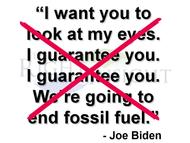The US and most of the developed nations have set various energy and climate goals, either in legislation or by executive action. These goals are typically intended to achieve Net Zero by 2050. Goals were set for specific sectors of their economies. In the US, these included achieving net zero emissions in the electric sector by 2035 and banning the sale of fossil fueled vehicles and residential and commercial appliances and equipment by 2035. Oil and gas lease sales were cancelled or delayed, restrictions were placed on oil and gas exploration and production on oil and gas pipelines were denied approval.
The common approach was to replace fossil fuel electric generation with wind and solar generation. Some governments also chose to eliminate nuclear generation and replace it with wind and solar. This approach deprived electric utilities and their regulators of the freedom to select the mix of generation technologies which best supported the demand and consumption characteristics of their markets.
Massive subsidies and incentives were offered to encourage investment in wind and solar generation, largely to the exclusion of the investments in storage necessary for intermittent renewable generation to replace fossil generation in a stable and reliable electric grid, rather than merely displace a portion of the output of the fossil generators. The failure to invest in sufficient storage deprived the utilities of the freedom to retire the fossil generators, since they were needed to back up the intermittent renewables. This also resulted in significant increases in electricity costs.
The goals for elimination of fossil fueled vehicles were intended to deprive vehicle manufacturers of the freedom to produce the vehicles their customers preferred and to deprive customers of the freedom to purchase the vehicles they preferred. Significant incentives were offered to manufacturers to produce electric vehicles and to customers to purchase them. Significant funding was also committed to incentivize and support the installation of public electric vehicle charging infrastructure.
The goals for elimination of fossil fueled appliances and equipment were intended to deprive purchasers of the freedom to select the appliances and equipment which best suited their needs. Significant incentives were offered in some nations for the replacement of gas boilers with electric heat pumps. However, the incentives proved insufficient to offset the much higher installed cost of the heat pumps and the higher operating costs resulting from electric rate increases. There were also pilot programs proposed to convert existing natural gas distribution systems and end use appliances and equipment to operate on Hydrogen. Those pilot programs were abandoned after strong consumer resistance.
The new US Administration appears poised to terminate the range of programs put in place in support of the Net Zero goal and to restore the freedoms they threatened. The Administration proposals are not intended deprive utilities of the freedom to choose renewable generation or to deprive consumers of the freedom to choose electric vehicles, electric heat pumps or other electric appliances and equipment. However, it is likely that the subsidies and incentives which had been offered will disappear or be dramatically reduced.
While the energy and climate goals have had significant impacts on the economies of the developed nations which have adopted them and would continue to have massive further impacts on those economies, it has become clear that there are no plans in place to achieve the goals. Several recent non-government planning exercises suggest that achievement of the goals which have been established is implausible, especially in the timeframes which have been established for their achievement.
Originally published here.








